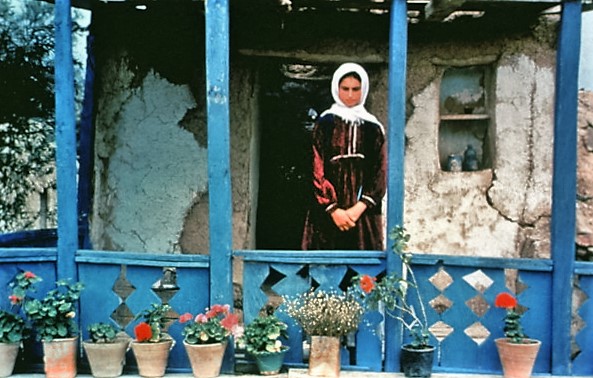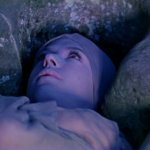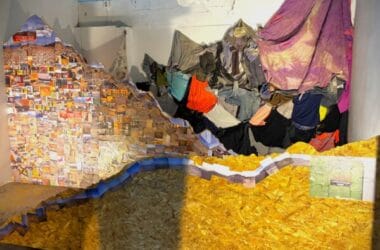Internationally acclaimed Iranian filmmaker Abbas Kiarostami’s “realist parable film-making” expanded the artistic history of world cinema. Called “an icon of change in Iran,” his death this past Monday has challenged critics to find ways to fully describe the distinctive nature of his cinematic mastery.


Postscript: Abbas KIAROSTAMI, 1940—2016
By Richard Brody, Published in The New Yorker
The Iranian director Abbas Kiarostami, who died this week at the age of seventy-six, was simply one of the most original and influential directors in the history of cinema. He achieved something that few filmmakers ever have: he seemed to create a national identity with his own cinematic style. He was the first Iranian filmmaker who expanded the history of cinema not merely in a sociological sense but in an artistic one, and his tenacious, bold, restless originality—an inventive audacity that carried through to his two last features, made outside of Iran—focused the attention of the world on the Iranian cinema and opened the Iranian cinema to other directors who have followed his path.
“He wasn’t just a film-maker,” said Oscar-winning fellow Iranian Asghar Farhadi, “he was a modern mystic, both in his cinema and his private life.”
httpvh://youtu.be/Rh9-uKavbu0
Roads of Kiarostami is a 2005 Iranian documentary film directed by Abbas Kiarostami. Looking to his own art for inspiration, Abbas Kiarostami reflects on the power of landscape, which combines views of the Iranian auteur’s austere black-and-white photographs with poetic observations, engaging music and a politically provocative finale.
Art is born of a confluence of temperament and circumstances. It’s amazing that Kiarostami was able to work copiously and free-spiritedly within the rigid constraints imposed by the religious and political doctrines of the Iranian regime. Yet he also seemed to thrive on conflict, arising from his over-all sense of resistance to authority and defiance of norms, which he expressed subtly but decisively in dramatic action and in cinematic form. He was one of the greatest ironists and symbolists in the history of cinema, bringing out grand philosophical ideas and depicting independent-minded characters, while nonetheless apparently deferring to imposed conventions and expectations.
Abbas Kiarostami was a mysterious and delicate fabulist of human nature and human relations, a film-maker whose stories were somehow in, but not of, the real world. — Peter Bradshaw
httpvh://youtu.be/0IBIufcuFvE
The Minimalist Cinema of Abbas Kiarostami (Video Essay)
In the nineteen-seventies, Kiarostami made his earliest films under the auspices of the Kanun, or Institute for the Intellectual Development of Children and Young Adults. They were didactic films, for and about young people. After the Islamic Revolution, he continued to make educational films, but a sense of his sly radicalism appears in the short film “Orderly or Disorderly,” from 1981, a sort of cinematic “Goofus and Gallant” of large groups, in which the orderly one appears terrifyingly dehumanized (and enforced by the authority of the police) and the disorderly appears lively and vital—but not without risks and conflicts. It’s also a reflexive film, in which each sequence is prefaced by a slate and a clap, as well as a film of passionate observation, expressing the sheer joy in seeing and filming the alluring details and large-scale patterns of daily life.
“When you take a tree that is rooted in the ground, and transfer it from one place to another, the tree will no longer bear fruit,” Kiarostami told The Guardian. “And if it does, the fruit will not be as good as it was in its original place. This is a rule of nature. I think if I had left my country, I would be the same as the tree.”
httpvh://youtu.be/vHxbuvuHOVU
Scene from Through The Olive Trees
The first paradox of Kiarostami’s career is the clash between documentary and dramatic elements, between the observed and the imposed, between the discovered and the determined—and between the closed world of the movie shoot and the total one behind the camera. He worked mainly with non-actors whom he encountered on location, as in his 1987 feature “Where Is the Friend’s Home?,” the story of a schoolboy in the rural village of Koker who travels to another village to give a classmate a notebook, in the process defying parental authority, and other authorities as well. That region was devastated in 1990 by an earthquake; in the 1992 feature “Life and Nothing More,” Kiarostami dramatized his trip to Koker after the disaster to inquire about the movie’s young star, with an actor playing the director. One of the film’s key incidents is an encounter with a newlywed man who married his fiancée the day after the earthquake (they spend their first nights together in the shelter of ruins). Kiarostami followed that film with “Through the Olive Trees,” a story based on the life of the local mason who played the newlywed groom in “Life and Nothing More.” The director is a character, too, and he gets involved in the couple’s relationship. For that matter, the movie opens with an actor addressing the viewer, identifying himself as an actor playing a director who has come to Koker to choose an actress for a film.
“At a time of war and isolation, when the whole world thought we are a warmongering country, Kiarostami showed another, peaceful face of Iran,” the professor and journalist Mehrdad Hodjati said in an interview. “He is an icon of change in Iran.”
httpvh://youtu.be/tNGDqvRvolI
Taste of Cherry, A 1997 Film By Abbas Kiarostani, with English subtitles.
Read the Entire Essay at The New Yorker













Pingback: ‘Solaris’ – Tarkovsky’s Vision Beyond an Urban Future | WilderUtopia.com
Pingback: Cinematic Cultural Change in West Africa with Idrissa Ouédraogo